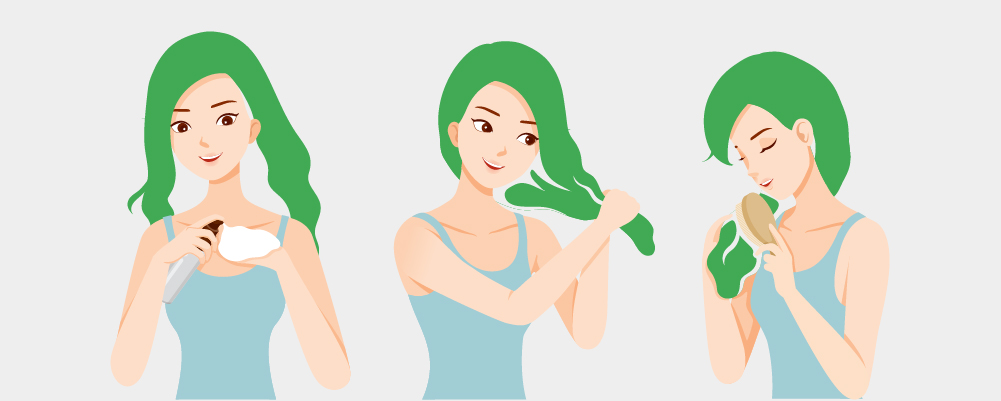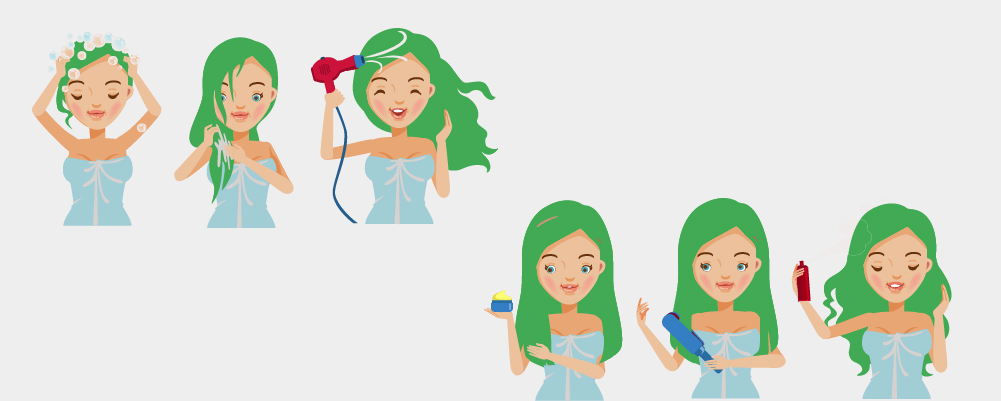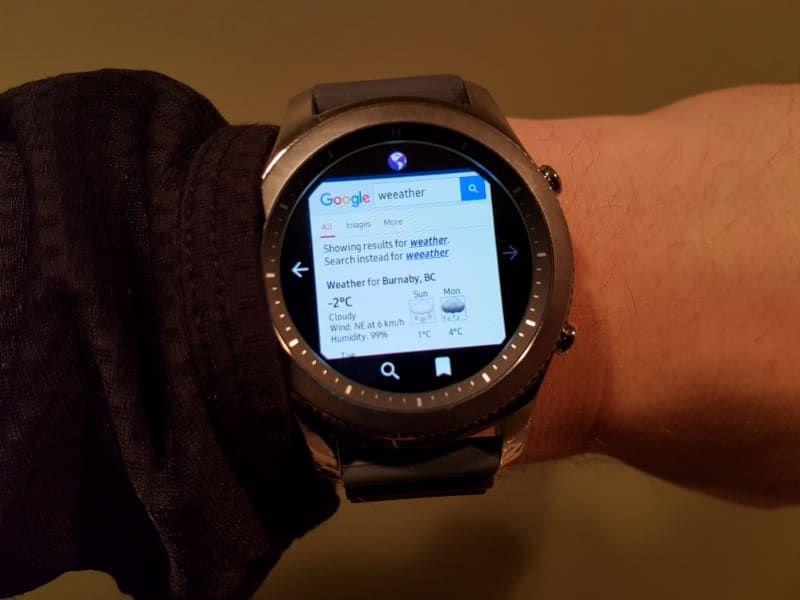We listed 15 secrets for healthy hair so here is a guide to longer, softer, and healthier hair.

A guide to longer, softer, and healthier hair

All of us want sleek, glossy hair that is easy to manage and always looks good. Sadly, not all of us are that lucky.
All is not lost, however, it is actually possible for all of us to have healthy hair. Although ‘healthy’ will look different on every hair type.
The reason most of us have unhealthy and damaged hair is due to the fact that we were never taught how to look after our hair. Most of us don’t even know what our hair type is.
In this article, you will find 15 secrets that will improve the health of your hair, no matter your hair type.
Table of Contents
- Signs your hair isn’t healthy
-
15 secrets for healthy hair
- #1 – Add protein into your diet
- #2 – Increase your Omega 3 intake
- #3 – Stop washing your hair daily
- #4 – Always use a conditioner
- #5 – Choose a conditioner that is suitable for your hair type
- #6 – Take vitamins
- #7 – Ditch regular shampoo, for a sulfate-free shampoo
- #8 – Regular visits to your hairdressers
- #9 – Protect hair overnight
- #10 – Use hair masks
- #11 – Decrease the amount of heating tools you use
- #12 – Use hair dye less
- #13 – Use homemade conditioners and masks sometimes
- #14 – Use shampoo on the scalp only
- #15 – Apply conditioner to the tips of your hair
- Summary
Related: Hair Accessories | Types of Hair Removal | Hair Extensions | Types of Wigs
Signs your hair isn’t healthy

Most of us don’t understand how our hair works and we often end up treating it badly because we don’t know what the right thing to do with it is. Today that changes.
The first step to improving the health of your hair is to recognize whether it is damaged and what is damaging it.
You would be forgiven for thinking that how you style your hair and what you use in it are the only things that affect your hair’s health. While these things do have a huge impact on your hair. You may not realize that your diet and lifestyle have a huge impact on hair too.
Poor diet and lack of sleep not only have a negative impact on our mood and skin, but they can also change our hair for the worse. These two factors can lead to hair loss, dry hair, brittle hair, and hair that is too oily.
By making a few small changes to your lifestyle you will see a big difference in the health of your hair. We will also be covering some other tricks you can use to make your lovely locks healthier.
15 secrets for healthy hair

#1 – Add protein into your diet
Our first secret is to make sure that you are getting enough protein in your diet.
A series of studies done on animals showed that protein deficiency, in both the short and the long term, can lead to hair thinning and loss.
Our hair and nails are made from the same thing (keratin) and when our diet is lacking they are the first of our body to suffer. When we become protein deficient our hair growth slows. After this, our hair becomes more brittle and loses its luster. After a while, our hair stops growing completely and instead starts to fall out.
Being protein deficient can also affect the health of our scalp and damaged scalps can also contribute to hair loss.
In the Western world, you are only likely to experience a protein deficiency if you aren’t eating enough or become malnourished.
There is an incorrect opinion that eating a vegan diet can lead to protein deficiencies. However, this is false – meat is not the only source of protein in our diets. Beans, spinach, and avocado are all high in protein. As are many other vegetables and legumes.
The sweet spot for protein consumption is between 40-50g of protein every day.
Cutting out a lot of processed foods from your diet can have an almost immediate impact on the health and look of your hair, skin, and nails.
The most important thing to take from this secret is that your hair is affected by more than just what you wash it with.
#2 – Increase your Omega 3 intake
Secret #2 is that boosting your Omega 3 intake will make your hair healthier and shinier.
This is not just true in humans. Grizzly bears have notoriously glossy and healthy coats because their diet mainly consists of cold water fish. Many dog owners are also encouraged to give their pups cod liver oil supplements to improve their fur health.
Why does Omega 3 have such a dramatic impact on the health of our hair?
Well, Omega 3 stimulates the sebaceous glands on our scalps. This helps to keep them flake-free and moisturized. As we mentioned above, without a healthy scalp you cannot have healthy hair.
Omega 3 also increases the rate of hair growth in humans. This means when we are taking in the right amount of Omega 3, our hair grows faster. Omega 3 also helps with moisture retention in our hair. This results in our hair feeling softer, stronger, and thicker.
Not only is Omega 3 great for our hair but it also has a whole other range of health benefits. These include reducing the risk of heart disease, helping reduce joint pain, and helping our brains to function more efficiently.
Omega 3 can be found in flaxseed, yogurt, cottage cheese, salad, and cereal. If you feel like your diet is lacking Omega 3 then it is also possible to get Omega 3 supplements.
#3 – Stop washing your hair daily
Do not wash your hair every day.
Hairdressers have been trying to tell us that for years. This isn’t just an industry myth, however, the science backs it up.
When you are washing your hair, you need to think about your hair as if it has three different parts – your scalp, your roots, and the tips of your hair. They all need to be treated differently – as you will see throughout this article.
Here is why you should not wash your hair every day.
Firstly, washing your hair daily strips your scalp and roots of their natural oils. This damages your scalp and can lead to hair loss. Washing away your natural oil actually makes your hair more oily. Doing this makes your body think that your hair is drying out, so it starts producing a lot more oil than it normally would to compensate for this.
The more you wash your hair, the more oily it will get.
Secondly, washing your hair every day will cause the tips of your hair to dry out faster. Shampoos are designed to strip oil from your hair but your tips have very little oil to start with. Washing your hair regularly only makes it more likely that your tips will dry out and split.
Washing your hair less frequently will allow you to save money on hair care products.
It is worth noting that if you struggle with an itchy and flaky you might want to ignore this tip. If you are using prescription shampoo, the treatment will be more beneficial when applied consistently.
#4 – Always use a conditioner
When you are washing your hair, you should always use a conditioner.
Shampoo and conditioner are designed to be used together. The shampoo will strip your hair of the oils that have built up in it. Then the conditioner will moisturize and nourish your hair. This prevents your scalp from thinking your hair is too dry and making too much extra oil.
In the 2010s, there was a trend where people with light and/or oily hair were told that they didn’t need to use shampoo. Well, it turns out that this was wrong. In fact, some studies show that people with damaged hair should only use conditioners.
The newest data suggests that if you are going to use shampoo then you should be using conditioner to balance out your hair’s oils. You wouldn’t wash your face with a tough soap and then not moisturize it afterward. The same principle is at work here.
When you are conditioning your hair, you should leave your conditioner on for as long as possible. Some people like to leave it on overnight. However, if you do not have the time to do that then try to leave it on for at least 5 minutes.
#5 – Choose a conditioner that is suitable for your hair type
Some of you may have read the section above and disagreed with it. Many people do find that conditioner does nothing for their hair or it makes it even more greasy. If this is the case for you, then you might be using the wrong type of conditioner.
Hair Care brands have been telling us for years that haircare is a one size fits all approach. But this just isn’t true. People with curly hair need to use a different conditioner from people with straight hair. It is also true that people of African descent need to use different conditioners to people of Indian descent. And people of European descent need to use an entirely different type of conditioner.
The trick to seeing the benefit of a conditioner is to use the right one for you.
There are many articles and online quizzes that will help you to work out your hair type. Once you have worked this out, you can find a set of shampoo and conditioners that are designed to treat your hair concerns.
If you have colored hair then you will want to use something designed to help maintain that color. If you have bleached hair then you may want to look for a 2-in-1 wash to use instead of shampoo to add extra moisture into your hair.
#6 – Take vitamins
As we mentioned before, a well-rounded diet is the key to healthy hair. However, if you want truly healthy hair then you may want to look into taking supplements.
There are a few vitamins and minerals that have been proven to make our hair healthier – while we can easily include some of these into our diet naturally, others are harder to come by.
The key supplements you should be looking out for are Vitamin C, Vitamin D, Vitamin E, Iron, and Zinc.
To get more Vitamin C in your diet try having a cup of orange juice with your breakfast.
Vitamins D and E are best to take as supplements. In most parts of the Northern Hemisphere, there is not enough sunshine in winter for us to get our daily dosage. It is also worth noting that the sun is not good for your hair or your skin. So, taking a Vitamin D supplement is an all-around better (and healthier) choice.
Most women are deficient in Iron which can really affect the health of their hair. Iron deficiencies also lead to a loss of periods, extreme exhaustion, and painful headaches. You should consider taking an iron supplement even if your hair is perfectly healthy.
Finally, you should consider taking a Zinc supplement. Zinc has been proven to help us grow stronger and healthier hair and nails. It is one of the most important supplements to take if you want glossy hair.
#7 – Ditch regular shampoo, for a sulfate-free shampoo
Take a look at the ingredients list of the shampoo you are currently using. If the list includes sulfates then it’s time to ditch it.
For years, cosmetics companies have been putting sulfates into our shampoos and face cleansers. While they do clean our bodies very efficiently they don’t do it in a good way.
Sulfates strip everything from our skin and hair, including the natural oils (which are essential for our hair’s good health). Not only does this cause our body to start overproducing oil but it also dries out our hair.
When our hair gets this dry it is more prone to breakages and splitting. Every time you use sulfates your hair will only get drier and more likely to break. It is a vicious cycle that can only be broken by ditching the sulfates.
Thankfully, in the last decade, we have seen a rise in Clean Beauty. One of the major benefits of Clean Beauty products is that they avoid harsh chemicals like sulfates and parabens.
Instead, they use natural ingredients, like argon oil, that nourish your hair and encourage it to grow. Once you have switched away from sulfates you will notice the difference after the first wash.
Other ingredients you should be avoiding in your shampoo are Ammonium Lauryl Sulfate or Sodium Laureth Sulfate (SLES), Sodium Lauryl Sulfate (SLS), Parabens, Sodium Chloride, Formaldehyde, Alcohol, and Silicones.
All of which will strip your hair and leave it brittle.
#8 – Regular visits to your hairdressers
When you are beginning your journey to healthier hair it is most likely that the tips of your hair will be beyond help.
When you start looking after your hair, you should focus on the new roots that are growing through. If you keep them healthy, eventually all your hair will be healthy. You can speed up this process by regularly visiting the hairdressers.
By trimming away the split and damaged ends of your hair, your body will be able to put all its focus into maintaining your (now healthier) roots. We recommend visiting the hairdressers at least once every 6-8 weeks at first. As your damaged hair gets cut away, you can make less frequent visits.
You should not pull at split ends as this will make them worse and cause the fracture to spread further up the strand of hair.
If you want to reduce the number of split ends you are developing then you should avoid brushing your hair when it is wet. Your hair is at its weakest when it is wet. So, this is when you should be extra careful with it.
If you are trying to save money then there is another way to deal with split ends in the short term. When your hair is dry, take a small pair of nail or hair scissors and use them to cut away any flyaways and split ends. Be careful not to pull on the split ends or you will make them worse.
This technique is best used on split ends near your roots and the top of your head,
#9 – Protect hair overnight
For the last decade, skin and hair care experts have been recommending that we all purchase silk pillows. The silk is more gentle on our skin than cotton and can prevent wrinkles. It also causes less friction between our hair and the pillows.
This friction can lead to your hair strands fracturing at the top of your head. This will make your hair look thinner and will leave the very top of your hair looking dry and frizzy.
Thankfully, there is a way to deal with this problem.
Get yourself a silk or satin bonnet or hair wrap. These wraps have all the benefits of the silk pillow but they will also keep your hair in place and protect your hairstyle. They also prevent your hair from developing new tangles.
If you like to sleep with your hair in plaits or rolls, you can still do this under the wrap.
If you have damaged hair then you should also consider ditching your elastic hair ties for silk scrunchies or silk ribbons. Hair ties are one of the leading causes of hair fracturing for people with curly and/or dry hair.
#10 – Use hair masks
We have talked about how to wash your hair, so now it is time to talk about how to treat your hair after you have washed it.
Our first tip is to use hair masks. Many people are scared of them because they are worried they will make their hair greasy. However, if you find the right type of mask for your hair then you will only see benefits from using a hair mask. Just like with conditioners.
When you are first beginning your hair journey, we recommend that you use a hair mask every time you wash your hair. As your hair gets healthier, you can cut this back to once a month or only when you feel like you need one.
Again, you will want to look for a mask that doesn’t have sulfates, parabens, or silicones in it. Silicones will coat the hair strands and make them feel softer initially. However, as they remain on the hair they will leach the moisture out of it. Leaving you with brittle and fractured strands.
If you have damaged hair you will want to look for a mask that includes ingredients like Hyaluronic acid. This is an emollient that helps your hair to absorb moisture from the air. Acids like this are not bad for your hair in small doses – quite the opposite, in fact.
Note, you may want to avoid using hair masks if you have colored hair. Leaving the masks in for extended periods of time can cause the color in your hair to run.
#11 – Decrease the amount of heating tools you use
If you know anything about hair care then you will not be surprised to see this item on the list. We all know and have known for years that heating tools are bad for our hair. However, not many of us put this knowledge into practice.
Many of us are required to attend work with neatly styled hair, so we feel the need to use heat styling tools on our locks every day. This is something we should be trying to avoid.
If you do not wash your hair every day and keep it wrapped up at night – you will notice that your styles last a lot longer. You may also want to consider looking into ways to create heat-free curls and look into different up-do’s that you can wear even when your hair isn’t straightened.
When you are heat styling your hair, you should make sure that you are using the right protective treatments. We like to use both a heatproof balm and a heatproof spray in our hair. We found that these styling treatments make our styles last longer and keep the moisture in our hair.
It is important to remember that having your hair out in the hot sun has a similar effect to using a pair of flat irons on your hair. To protect it wear a hat or use sunscreen on your hair.
#12 – Use hair dye less
If you want to keep your hair healthy, stop dying it at home.
At-home hair dying kits contain cheap ingredients that are no good for your hair.
You should also avoid bleaching your hair at home. There is perhaps nothing more damaging to your hair than doing this. The bleach in many At-Home kits is so strong that it can cause your hair to snap off at the roots.
You are also unlikely to get the results you are after when you dye your hair at home.
Overall, it is best to avoid dying your hair altogether, but if you do want to change your look then we recommend getting it done at a salon.
Hairdressers train for many years to be able to dye your hair with the least amount of damage possible. They are also able to get hold of higher quality dyes and highlighters.
If you already have color-treated hair, your hairdresser may recommend you let the hair grow out first before doing anything more to it. This will help you avoid any extra damage.
If you have dark hair, you may have to settle for the fact that dying your hair too light a color can seriously damage it. A deeper shade of highlights may be a welcome trade-off for healthier hair.
#13 – Use homemade conditioners and masks sometimes
If your hair is really damaged then you may want to consider making some rescue hair masks at home.
Using natural ingredients like olive oil, bananas, egg, and avocado can start your hair on the journey to recovery.
These masks may be as simple as leaving some Aloe Vera gel in your hair overnight. Or you might want to explore some of the thousands of recipes online. You want to make sure that you are picking a mask that is designed for your type of hair.
Here are some of our favorites:
For dry and damaged hair – mix 2 eggs, a tablespoon of olive oil, and half an avocado together. Apply this to the lengths of your hair. Make sure that you apply an extra layer to your tips. Leave on for an hour before washing off.
You can make a leave-in conditioner by getting yourself an empty spray bottle. Fill half of this bottle with water and another quarter with your conditioner. Then, add a tablespoon of olive oil. Top the rest of the bottle up with water. You can spray this into the lengths of your hair after washing it, or whenever you want to refresh your hair.
Finally, rubbing plain Vaseline into the ends of your hair can work wonders. The jelly was originally designed to help dry skin. However, it has been used for decades by plastic surgeons to help scars heal. It also works miracles on split ends.
#14 – Use shampoo on the scalp only
Do you remember that in tip #2, we said you need to think of your hair as three separate parts? The scalp, the roots, and the tips of your hair. We said this because they all need to be treated differently.
For example, the tips of our hair very rarely get oily. That is because the oil is produced at our scalp and travels down the hair. This can take weeks, so we often wash our hair before the oil reaches the tips.
For this reason, you don’t actually need to shampoo the ends of your hair. You just need to run warm water through it.
However, it is essential that you shampoo your scalp and roots. If there is too much oil built up in these areas the pores in your scalp can get clogged. This can cause hair loss and painful whiteheads to appear on your scalp.
You do not need to use very much shampoo when you are only washing your scalp and roots. You do not want any to run off into your tips.
If you have very short hair, then this tip does not apply to you, as most of your hair could be considered to be your roots. Short hair tends to be a lot healthier than long hair.
#15 – Apply conditioner to the tips of your hair
This tip follows on from the last one. Although it is not as universal.
Some people will benefit from applying conditioner throughout the lengths of their hair. Especially if their hair is very damaged. Everyone might want to consider this at the start of their hair care journey.
The main thing that everyone should take from this tip, is that when you are applying conditioner, you should apply the most to the tips of your hair.
As we mentioned above, none of your natural oils ever reach the tips of your hair. So they need all the help they can get when it comes to conditioning. Some people with very damaged hair may want to consider adding oil to the tips of their hair after washing it.
If you have very thin hair then you may want to consider only adding conditioner to the tips of your hair or only using a very light conditioner.
If you want to use a natural conditioner then you may want to consider using honey. Honey will both clean and moisturize your hair. But don’t forget to wash it out of your hair or you will be feeling sticky all day. This is a trick that the ancient Egyptians used to keep their hair glossy despite all the sun damage their hair went through.
Summary

Keeping your hair healthy isn’t just about putting the right hair masks on it.
To have glossy, moisturized, and happy hair you need to make sure you are looking after the rest of your body. You want to be eating enough protein, taking vitamin D supplements, and drinking enough water.
Wrapping your hair up in a silk wrap at night can help to prevent split ends. As will getting your hair cut regularly.
If you follow the 15 tips above you will see a difference in the quality of your hair in a matter of weeks. Once you understand what type of hair you have, you can start to look after it correctly.



